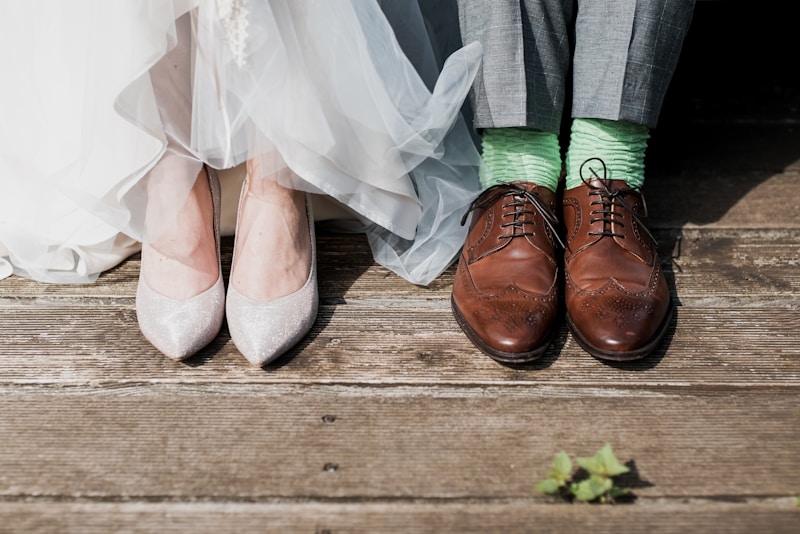Exploring Regional Variations in Wedding Dresses: A Cultural Odyssey
Weddings are a profound expression of love and commitment, and the attire worn during such ceremonies often reflects a culture's traditions, values, and aesthetics. One of the most distinct elements of any wedding is the wedding dress. Across the globe, regional variations in wedding dresses can be observed, each unique to its cultural context. This article explores the rich tapestry of wedding dress traditions worldwide, delving into the regional variations that make each one special.
The Significance of Wedding Dresses
Wedding dresses hold a place of significant cultural importance. They symbolize love, purity, and new beginnings, often being the focal point of the wedding ceremony. Historically, the colors, fabrics, and styles have varied dramatically, influenced by local customs, religion, climate, and even social status. Understanding these regional variations allows us to appreciate the diversity in marriage ceremonies and the importance placed on wedding attire.
Western Wedding Dresses: Tradition and Evolution
In Western cultures, the white wedding dress, popularized by Queen Victoria in the 19th century, signifies purity and innocence. Here are some noteworthy regional trends:
| Region | Style/Color | Details |
| United States | White, Ivory | Modern styles, often with embellishments |
| United Kingdom | Classic White | Focus on tradition, often royal influences |
| Scandinavia | Colored dresses | Emphasis on folklore, may include traditional patterns |
While white remains a popular choice, many modern brides are opting for colors like blush, champagne, or even bold hues, reflecting personal style rather than strict tradition.
Asian Wedding Dresses: Cultural Richness and Diversity
In Asia, wedding attire varies greatly from one region to another, often dictated by religious practices, traditions, and family heritage. Notable styles include:
| Country | Dress Style | Cultural Symbolism |
| India | Lehenga, Sari | Rich colors and intricate embroidery |
| China | Qipao, Red Wedding Dress | Symbolizes good fortune and joy |
| Japan | Shiro-maku | Traditional white kimono, symbolizes purity |
These dresses often capture the essence of the heritage, with intricate designs and vibrant colors playing significant roles. The red wedding dress in Chinese culture is particularly important as it symbolizes happiness and good luck.
African Wedding Dresses: Vibrancy and Tradition
Africa is home to diverse cultures, each with its unique wedding traditions and attire. Common elements include:
| Region | Style | Details |
| West Africa | Gowns with Kente fabric | Bold colors and patterns |
| East Africa | Saree and Kanga | Symbolizes unity and togetherness |
| North Africa | Kaftan | Ornate designs with silver embroidery |
These dresses reflect the rich cultural heritage and are often accompanied by vibrant accessories, from headpieces to jewelry, emphasizing the importance of appearance in African wedding rituals.
Latin American Wedding Dresses: Fusion of Traditions
Latin American cultures often blend indigenous traditions with Spanish influences, creating unique wedding attire. Noteworthy characteristics include:
| Country | Dress Style | Details |
| Mexico | White dress with colorful embroidery | Incorporates cultural motifs and lace |
| Brazil | Short dresses, tropical themes | Focus on fun and vibrancy |
| Argentina | Elegant gowns | Combines tradition with modern flair |
The attire often includes various symbols that represent love and joy, further enhanced by traditional music and dance that celebrates the couple's union.
The Influence of Climate on Wedding Dresses
Climate significantly affects wedding attire, particularly in regions with extreme weather conditions. In hotter climates, lightweight fabrics such as chiffon and lace are preferred, while colder regions may feature heavier materials like satin or velvet. Furthermore, modesty also plays a crucial role; for instance, in many Middle Eastern countries, brides often wear long-sleeved gowns and head coverings, influenced by cultural and religious customs.
Cultural Fusion and Modern Trends
As globalization continues to bridge cultural gaps, many couples are opting for fusion styles that blend elements from different traditions. This trend reflects personal stories and family heritages, allowing for unique expressions that honor multiple cultures. These modern approaches often incorporate:
- Mix of colors and fabrics from different regions
- Custom designs that blend traditional and contemporary styles
- Use of technology to customize designs and accessibility
This evolution showcases how traditions can adapt and transform while still paying homage to their origins.

Conclusion: The Essence of Regional Variations in Wedding Dresses
The regional variations in wedding dresses reveal significant cultural insights that go beyond mere aesthetics. Each style carries a story—a narrative of tradition, love, and the importance of familial and societal connections. As we explore these differences, we gain a richer understanding of what weddings mean in various cultures, and this knowledge can enhance our appreciation for the diverse expressions of love around the globe.
When choosing wedding attire, consider your heritage, personal style, and the message you want to convey. Embrace the beauty of regional variations, as they reflect not only personal taste but also the cultural significance of this momentous occasion.
In summary, whether you lean towards the classic white gown or desire a vibrant lehenga, the key is to choose a style that resonates with your personality and cultural background. The journey of selecting your wedding dress is not just about fashion—it's about honoring the rich tapestry of traditions that make every wedding unique. Happy planning!